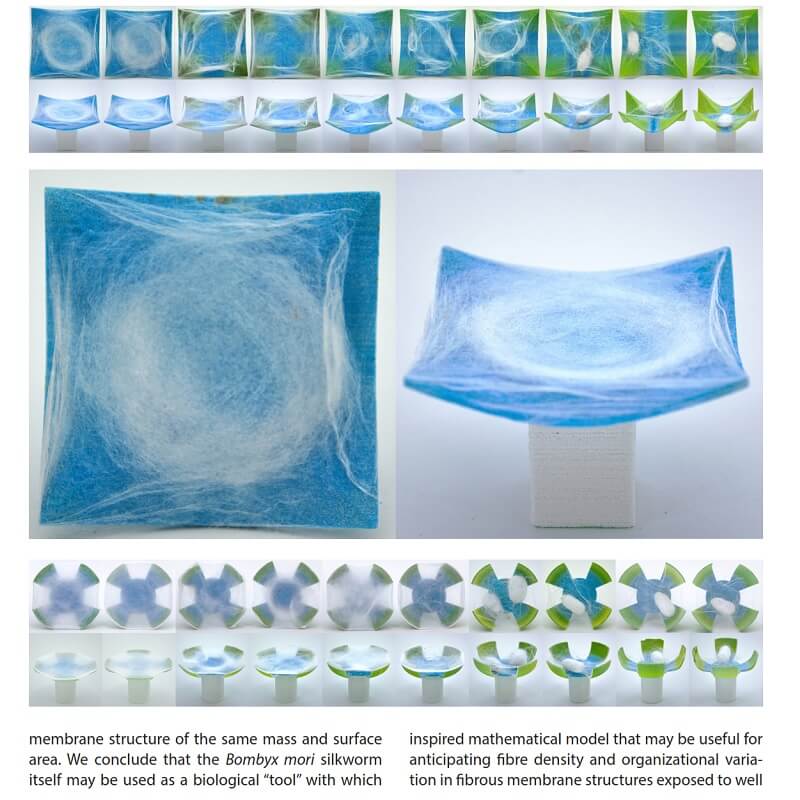Biological Computation
Biological Computation for Digital Design and Fabrication
A biologically-informed finite element approach to structural performance
and material optimization of robotically deposited fibre structures
Neri Oxman1, Jared Laucks2, Markus Kayser3, Carlos David Gonzalez Uribe4, Jorge
Duro-Royo5
Massachusetts Institute of Technology, Media Lab, Mediated Matter, USA
http://matter.media.mit.edu
[email protected], [email protected], [email protected], [email protected], [email protected]

In this paper by Neri Oxman, Jared Laucks, Markus Kayser, Carlos David Gonzalez Uribe and Jorge Duro-Royo, the formation of non-woven fibre structures generated by the Bombyx mori silkworm is explored as a computational approach for shape and material optimization.
 Biological case studies are presented and a design approach for the use of silkworms as entities that can “compute” fibrous material organization is given in the context of an architectural design installation. Authors demonstrate that in the absence of vertical axes the silkworm can spin flat silk patches of variable shape and density.
Biological case studies are presented and a design approach for the use of silkworms as entities that can “compute” fibrous material organization is given in the context of an architectural design installation. Authors demonstrate that in the absence of vertical axes the silkworm can spin flat silk patches of variable shape and density.
 They present experiments suggesting sufficient correlation between topographical surface features, spinning geometry and fibre density. The research represents a scalable approach for optimization-driven fibre-based structural design and suggests a biology-driven strategy for material computation.
They present experiments suggesting sufficient correlation between topographical surface features, spinning geometry and fibre density. The research represents a scalable approach for optimization-driven fibre-based structural design and suggests a biology-driven strategy for material computation.





























Comments